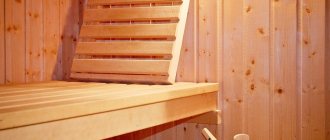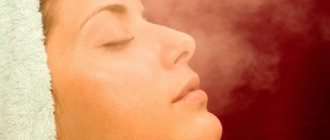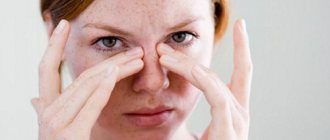Since ancient times, bathing procedures have gained unprecedented popularity and are characterized by excellent benefits for human health. The heat and steam present in the baths help reduce stress and relieve tension, cleanse the skin and remove toxins, normalize blood pressure and improve blood circulation.
Photos of our baths Photos of our saunas Find out the cost
The benefits of baths for colds
Many of us have heard that exposure to hot steam can help cure colds. But does a steam room help alleviate this condition and relieve a person from a runny nose? Numerous studies and analytical data have divided the opinions of experts: some argue that the bathhouse has neither positive nor negative effects on the health of a person with a runny nose, while others do not recommend visiting the bathhouse due to the risk of burns to the mucous membrane.
If a bathhouse visitor has a runny nose, but still decides to take a steam bath, some recommendations should be followed:
- limit the time spent in the steam room to a minimum;
- do not plunge into cold water immediately after the steam room;
- use medicinal herbal drinks.
You can't take a steam bath
On a full and empty stomach. You need to eat an hour or an hour after the bath.
While intoxicated. High temperatures cause intoxication faster, and alcohol impairs coordination, which can lead to injuries and burns.
Do not try to stay in it for more than the time that your body can tolerate.
Do not stand under ice water after a steam room. For an unprepared person, a sudden change in temperature can result in sudden cardiac arrest.
In between visits to the steam room you need to drink, preferably herbal tea. This compensates for fluid loss.
When not to visit the bathhouse
Visiting the bathhouse has not only numerous advantages, but also some contraindications. For most people who are otherwise healthy, the biggest risks are dehydration and dizziness.
Despite all the advantages of the bath, it is advisable to consult a doctor before visiting it if you have any health problems. The main contraindications during a cold are:
- heat;
- Strong headache;
- swelling of the nasopharynx and cough;
- acute viral infections.
Is it possible to wash?
A sick person always intuitively wants to “wash off” the sweat and secretions of the sebaceous glands secreted during the illness. This natural desire should not be resisted; the patient can take a warm shower or bath, but not longer than 15 minutes. After washing, you should beware of hypothermia so that the disease does not worsen and does not recur if it has already passed.
Is it possible to wash in a bathhouse with a temperature of 38 - no, it is not advisable. Warming procedures for low-grade and febrile symptoms are contraindicated, and the temperature in the bath provokes not just warming, but also overheating, which is extremely dangerous in case of illness.
You can wash in a bathhouse with a temperature of 37 and up to 37.5, if it is caused not by illness, but by physiological fluctuations.
Massage with a broom in the bathhouse
It is rare to meet a person who visits a bathhouse without a broom. A bathhouse and a broom are absolutely inseparable concepts, which is why for a long time there have been quite a lot of sayings that the broom is the master of the steam room.
In the times of our ancestors, healers said that every bath broom has healing properties.
Visiting a bathhouse during a mild cold is an excellent opportunity to get good steam, which gives health and rejuvenation to the body, cleanses the skin and removes toxins, and a broom with good steam gives excellent health.
The bath (in the absence of contraindications) has a beneficial effect on the human body, promoting its rejuvenation and healing. One of the most effective procedures in the steam room, if you have a runny nose, is a massage with a broom, thanks to which you can forget about your existing ailment.
Each tree has its own healing qualities, and brooms made from them have a number of advantages:
- birch - releases aromatic oils, the effect of which helps to get rid of the runny nose and quickly restore strength;
- oak - it is advisable to form in August-September, it is famous for its healing properties and rejuvenating effect;
- linden - has a healing effect on the respiratory system;
- eucalyptus – useful for colds, respiratory diseases, cleanses the nasal passages and improves a person’s condition during a runny nose;
- maple – perfectly absorbs sweat, improves the health of the entire body.
Bath massage using a hardwood broom is a real art, it should be carried out competently and consistently.
Why is a bathhouse better than a bathtub?
Its main advantage over conventional hygiene procedures is its high temperature. In fact, the bath is physical therapy for the body. Under the influence of heat, skin pores open, sweating increases, and microcirculation improves. Intense heating increases vascular tone, eliminates muscle spasms, and helps free blood and lymph from toxins. The bathhouse is good for relieving nervous tension, which is important in case of severe stress or sleep disturbances.
Steaming regularly is very beneficial. One procedure can replace several healing techniques and trips to the spa. People with respiratory diseases are also often advised to get rid of illness in a steam room or sauna. It is believed that in a couple of sessions you can deal with the most ferocious flu, enter the bathhouse sick and leave healthy.
This opinion is partly correct. Water vapor and heat help reduce intoxication and improve well-being during ARVI. But we must not forget about the high load they place on the body. There are firm rules on how to visit the steam room in order to recover faster.
Rubbing, inhalation and healthy drinks
The following bath procedures are characterized by an effective therapeutic effect, which helps get rid of a runny nose and strengthen the general condition of the body:
- rubbing is carried out using a mixture of salt and honey, providing increased sweating;
- inhalations with essential oils from fir, lavender, eucalyptus promote deep penetration into the nasopharynx, thinning mucus and clearing the respiratory tract of mucus; such oils are diluted with water to moisten a broom, shelves in a steam room or hot stones;
- medicinal drinks, fluid lost by the body during a stay in the bathhouse, must be replenished, which is why herbal drinks consumed by steamers between visits to the steam room are widely popular; Fruit teas with honey also provide a significant effect.
By following all the above recommendations, steam room lovers, even in unpleasant moments of colds, can visit the bathhouse without fear for their health and improve the overall well-being of the whole body.
You can order the finishing of a Russian bath or Finnish sauna on our website or by calling: 8 (499) 110-97-56.
Is it possible to float your feet?
Modern therapists and pediatricians have long struggled with the belief that a sick person (child or adult) can have their feet steamed or taken to a bathhouse when they have a fever. At high temperatures, steaming your feet is contraindicated, and parents should remember this.
If there is no temperature, you can “steam your feet” to warm them up after a person has been caught in the rain, gotten their feet wet, or gotten cold. Warming the lower extremities leads to a reflex relief of swelling of the nasal mucosa, helps relieve a runny nose and temporarily reduce congestion.
What is the benefit
Frankly speaking, there are a lot of benefits.
- Bath procedures have a positive effect on the effects of stress, fatigue, and improve sleep.
- In the bath, the skin is cleansed of bacteria, which helps renew the epidermis. New cells contain up to 70% moisture, while keratinized cells contain about 10%.
- In the bath, blood vessels, especially small ones, expand. This means blood circulation improves, which leads to increased tissue nutrition.
- Muscles relax, circulation of interarticular fluid increases. That is why the bath is useful for diseases of the musculoskeletal system, including joints.
There is an opinion that thermal procedures help cleanse the body of waste and toxins. How can this happen? The mechanics are like this. There are from 2 to 5 million sweat glands on our body; there are about 400 of them per 1 square centimeter on the palms and soles. In the bathhouse, the sweat glands remove moisture through the skin with the same intensity as the kidneys. During one visit, a person loses from 500 to 1500 ml of fluid. It contains toxic substances.
Pharyngitis and visiting the bathhouse
Unlike sore throat, pharyngitis is caused by other bacteria that are less dangerous in terms of the development of rheumatic complications. However, by and large, if you have pharyngitis, it is also not recommended to visit the steam room, for approximately the same reasons.
At the same time, it should be noted that pharyngitis often manifests itself exclusively with local symptoms (sore throat), without weakness, fever and serious changes in the body. It is easier and faster to treat, and warming the throat, it is believed, can bring good results, but for this, UHF and other physiotherapeutic procedures are used, but it is still better to avoid visiting the steam room until complete recovery.
What drink
Tea from medicinal herbs is brewed according to different rules. Take a couple of spoons of herb and pour in hot, but not boiling, water. Cover the cup with a saucer. After 10 minutes the infusion is ready.
You need to brew herbal tea not with boiling water, but with hot water.
But it is not always possible to brew tea in the bathhouse. Then you can take the drink with you in a thermos. The flask is rinsed with hot water, herbs are added at the rate of 2 teaspoons per glass, and hot water is poured. By the time you get to the bathhouse, the tea will steam and be strong and aromatic.
Almost everyone knows which herbs to use for diseases, but few know which ones increase sweating. So, in order to “sweat” more actively, you need to drink linden blossom, or brew elderflowers; Chernobrivtsy is also good. Everyone knows that raspberry jam also has a diaphoretic effect, but it is interesting that tea from raspberry stems has almost the same effect as raspberry jam.
When a steam room is contraindicated
“Fever is a reason to refuse to go to the bathhouse. Going to a steam room in such a state is like putting a hot pie in a hot oven. Another absolute contraindication is if the cold does not go away within 10–14 days and is accompanied by a temperature of 37.2–37.3 degrees. In this case, it is healthier and safer to hover your legs. During this procedure, the blood vessels dilate, which has a positive effect on the condition of the lungs and respiratory tract.”
© iStock/Getty Images
What diagnoses should you not go to the bathhouse with?
- Exacerbation of chronic diseases of the lungs and bronchi, bronchial asthma,
- Acute infections
- Severe liver diseases,
- Exacerbation of peptic ulcer disease,
- Severe form of diabetes mellitus,
- Thyroid dysfunction
- Glaucoma,
- Epilepsy.
“It is necessary to refrain from visiting the bathhouse during a crisis of hypertension (with an increase in pressure up to 200 mm Hg), coronary heart disease, severe vascular atherosclerosis, chronic heart failure, severe arrhythmia, thrombosis or a tendency to bleeding,” says Mehman Mamedov . “People over 70 years old and those who do not tolerate changes in temperature and humidity should not go to the steam room.” In addition, phlebologists prohibit the bath for their patients - if you are prone to varicose veins, you need to be careful with thermal procedures. You should also be careful after certain procedures with a cosmetologist: Botox injections, for example, or placement of threads.
Effect on disease
Many bathhouse lovers believe that visiting it can be a good way to treat illness. It is the best place for therapeutic inhalations. They explain their statement by hot air, which helps cleanse the upper respiratory tract and tonsils from purulent plaque.
Essential oils, which are often purchased when planning to take a steam bath, kill germs and pathogenic bacteria.
The high temperature of the steam room heats the body, speeds up metabolism, removing toxins and other harmful substances from the body. The nervous system relaxes, stress is relieved, mood improves, and this promotes rapid recovery.
Experts have a different point of view about baths during a sore throat.
Don't joke with a runny nose
Sinusitis, one of the forms of acute sinusitis, is one of the most common diseases. In Russia, acute sinusitis is diagnosed in 10 million people annually. In most cases, acute sinusitis develops as a complication of an acute respiratory viral infection, which is observed in 2-5% of patients with ARVI. And often this disease occurs due to a frivolous attitude towards a runny nose and the belief that with treatment it will go away in a week, and without it - in seven days.
Sinusitis is an insidious disease and can easily be mistaken for a cold. However, if your health worsens after 3-5 days and the malaise lasts more than 7-10 days, it is highly likely that it is sinusitis. The risk group for this disease includes those who often catch colds, as well as allergy sufferers.
In most cases, the causative agents of sinusitis are viruses - adenoviruses, rhinovirus, etc. The main symptoms of sinusitis and, in particular, sinusitis are difficulty in nasal breathing, headache, mucopurulent discharge from the nose. If the condition is not diagnosed and treated promptly, sinusitis can last for months or even years. At the same time, it is dangerous due to chronic complications, such as purulent accumulations, infection of the nose, and meningitis.
Marina Martynova , an otorhinolaryngologist at the Resort Department of the Scandinavia Clinic (Sestroretsk), talks about how to cope with this terrible disease
– The peak incidence of sinusitis occurs in St. Petersburg during the cold season. It often occurs as a complication of acute rhinitis, influenza, measles, scarlet fever and other infectious diseases. How severe sinusitis is depends on the pathogenicity of the pathogen, as well as on the state of the patient’s immunity. As a rule, a disease that is not diagnosed and treated in time is difficult to resolve. Factors such as immunodeficiency, allergies, and bad teeth can contribute to the development of sinusitis.
– Treatment of sinusitis is often associated with the need for puncture of the sinuses, a rather unpleasant procedure. Is such a puncture always necessary?
– In our department, we first of all try to use more gentle treatment methods that do not injure the nasal membrane and are completely painless. In the initial stage of sinusitis, it is not always necessary to perform a puncture; you can get by with rinsing the nose. But it all depends on what stage the disease is at. For example, in case of very severe pain, when sinusitis is of dental origin, a puncture cannot be avoided. The puncture is done in order to pump out pus from the sinus, rinse the sinus, and then inject antibiotics and anti-inflammatory drugs into it. This method is very, indeed, very effective, but we resort to it only as a last resort.
– Can you get any help related to diseases of the ENT organs at the clinic or will some procedures have to be done in the hospital?
– The department has all the necessary equipment for emergency care and prevention. In particular, the department has a state-of-the-art sinus ultrasound scanner, which allows diagnosing diseases of the paranasal sinuses without radiography, a pure-tone audiometer - an electroacoustic device for measuring hearing acuity, and an impedance meter - for studying the function of the patency of the auditory tube. To test hearing in newborns, we use the sound reactotest. All this allows us to provide emergency and planned care for various diseases of the ENT organs. Only if surgical intervention is necessary will the patient have to go to the hospital.
– What preventive measures would you recommend? How to protect yourself from sinusitis and other diseases of the ENT organs?
- First of all, you need to toughen up. We can recommend dousing with cold water. Of course, you shouldn’t immediately take an ice-cold shower; first you need to douse yourself with water that is 2-3 degrees lower than your body temperature. Contrasting douches are good - it trains the blood vessels. In summer it is good to walk barefoot on the ground, on sand. Excessive overheating also affects the immune system, so you should not lie on the beach for a long time, especially in the afternoon. In the North-West region, the best time to be outside is before 11 a.m. and after 5 p.m. It is worth paying attention to nutrition and daily routine. Moderation is needed in everything. This helps a lot to preserve your health!
Symptoms of sinusitis:
- unpleasant sensations in the nose, paranasal area or bridge of the nose, which increase in the evening; gradually the whole head begins to hurt; if the process is unilateral, then pain is noted on one side;
- the nose is stuffy, the patient begins to sound nasal;
- runny nose, often with mucous or purulent nasal discharge; this symptom may not exist if the nose is very stuffy, since the outflow from the paranasal sinus is difficult;
- body temperature rises to 38 degrees and above; As a rule, this symptom is observed in acute sinusitis; in a chronic process, the body temperature may not increase.











